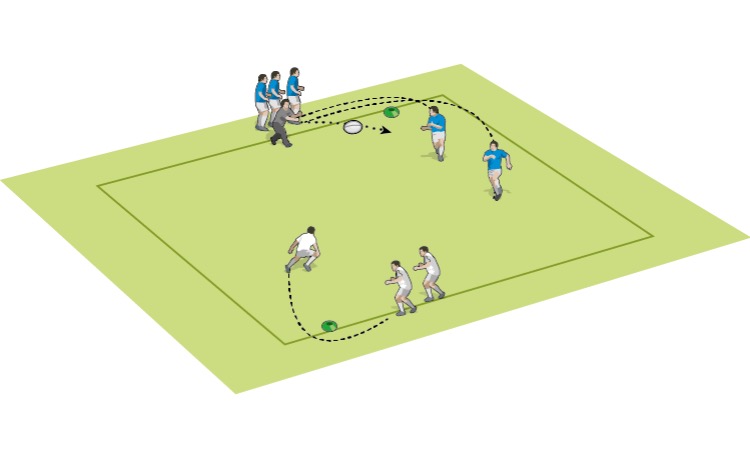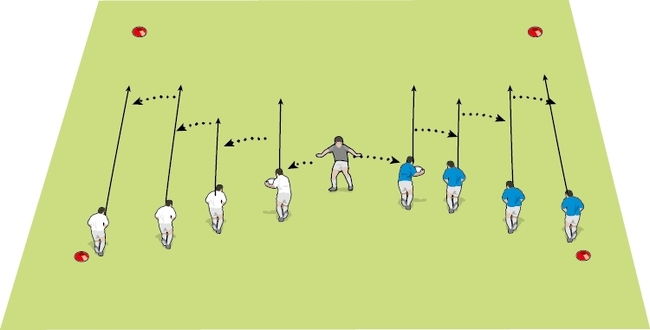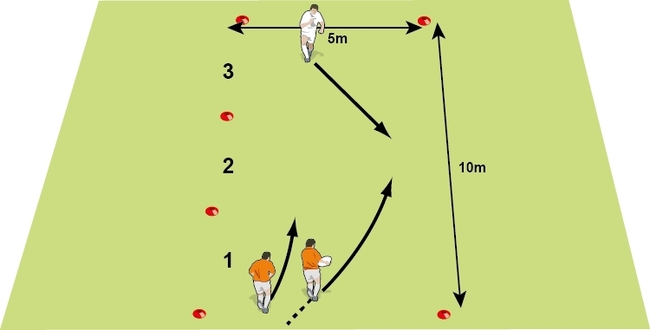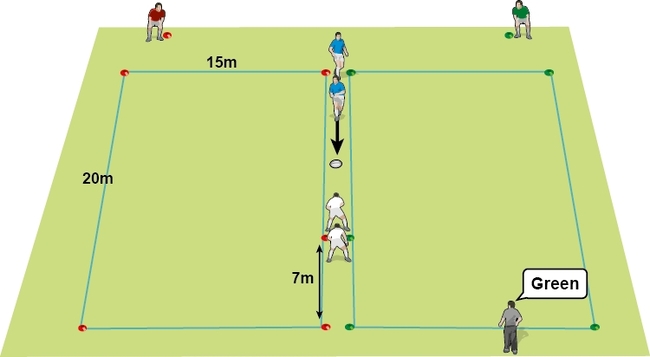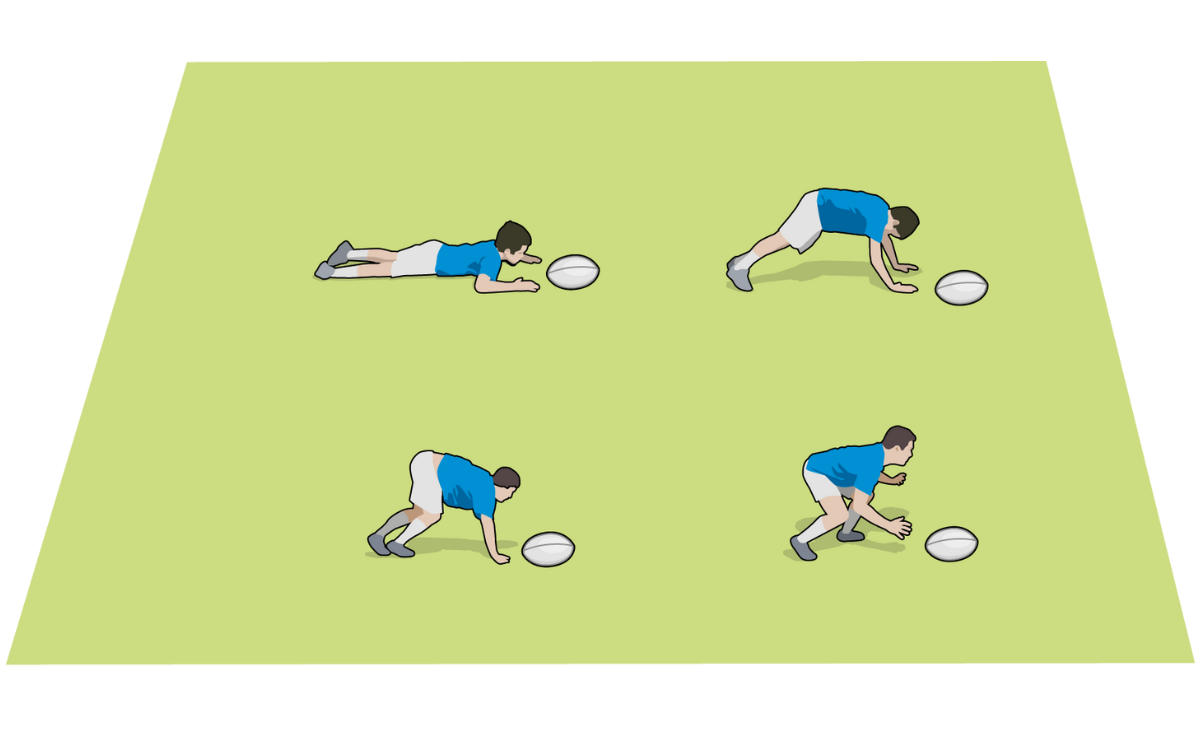Coach 2 v 1s with games only
Coaching 2 v 1s to young players can be a tough task. Why not try to coach them these skills through games only?
How many 2 v 1s happen in a senior rugby match, let alone young players’ rugby?
In the purest sense of just two attackers facing one defender, not many times in senior and even less in junior rugby. But that doesn’t mean it’s a skill that doesn’t need development.
A 2 v 1 exercise isolates this area from the main game, where a ball carrier gets used to fixing a defender before releasing their teammate. A “fixed” defender cannot reach the receiver.
For young players, this is a tough skill because often either the lack of speed of the pass or the poor pace of the receiver might not be enough to remove the chance of the defender shifting over. So, for young players, we might find ourselves frustrated when trying to work on these exercises.
However, in a match, for some reason, they still find a way to the try line. How does this happen? Because they either barrel their way through a tackle, beat a tackler with footwork or, just sometimes, they create an overlap.
Therefore, the real 2 v 1s come from making sure the overlap is exploited. In other words, when a player is in space, the passer gets them the ball.
These are the skills we are looking for:
- Identification of an overlap.
- Passing at about the right time.
- Passing on the run.
- Receiving the ball when running.
It’s points 1 and 2 which are so hard to replicate in an exercise. A 2 v 1 exercise is already an overlap, so the players don’t need to identify it.
Passing at about the right time has to take into account so many factors that you would have to run hundreds of different scenarios to cover all the possibilities.
That’s why games are just as good for decision-making skills. You just have to tweak the scenarios. Play small-sided touch in different sized areas. Use each tweak for a week and then return to it in at least a month’s time. However make sure you do, because the players will build on solutions from previous games.
FIVE SCENARIO TWEAKS
1 ONE PLAYER BACK
A good game is 5 v 5 touch rugby in a wide box, but not long, say 25m wide, 15m long. One defender must always be on the backline. They can move side-to-side, but not come forward. They return to the game when they are on the attack. Rotate them every try.
2 ONE PLAYER DOWN
Play the same game as above, but instead of a player on the backline, you shout out a name of a defender and they have to go down on their fronts before returning to the game.
3 6 v 3 v 3
In a large box (say 30m), put six attackers in the middle with a ball. Put three defenders at each end. The attackers aim to score at one end and then turn to attack the other end if they do score or fail to score. Though it will seem like it’s 6 v 3, with fatigue and players chasing back, it will be more like 5 or even 4 v 3.
4 CLUSTER TOUCH
With a touch, the ball carrier goes to ground. All the defenders must touch the prone ball carrier before returning to the game. The attack pass as soon as they can. For younger players, all the defenders touch the ball carrier and stay there. Only then can the ball be played by the attack.
5 DOUBLE TOUCH PASS
The ball carrier must be touched twice before they pass. Have a limited number of “tackles” for each team. This version draws in defenders and creates overlaps.
Related Files
Newsletter Sign Up
Coaches Testimonials

Gerald Kearney, Downtown Las Vegas Soccer Club

Paul Butler, Florida, USA

Rick Shields, Springboro, USA

Tony Green, Pierrefonds Titans, Quebec, Canada
Subscribe Today
Be a more effective, more successful rugby coach
In a recent survey 89% of subscribers said Rugby Coach Weekly makes them more confident, 91% said Rugby Coach Weekly makes them a more effective coach and 93% said Rugby Coach Weekly makes them more inspired.
Get Weekly Inspiration
All the latest techniques and approaches
Rugby Coach Weekly offers proven and easy to use rugby drills, coaching sessions, practice plans, small-sided games, warm-ups, training tips and advice.
We've been at the cutting edge of rugby coaching since we launched in 2005, creating resources for the grassroots youth coach, following best practice from around the world and insights from the professional game.
